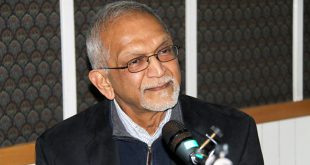This paper deals with the death of a high religious authority, the Twelver Shiʿi marjaʿ al-taqlīd, or “Grand Ayatollah”, Sayyid Muḥammad Ḥusayn Faḍl Allāh.
The emphasis given to following a living authority within the Twelver Shiʿi tradition makes their passing a moment of crisis, all the more so in the case of a figure who made “contemporaneity” a cornerstone of his distinctive appeal. I examine not only the events surrounding Faḍl Allāh’s death but also its aftermath, in particular the question of the “succession” to his legacy. In an unorthodox move that maintains his reputation for controversy, Faḍl Allāh’s organisation has continued to operate as an independent foundation in his name without falling under the aegis of a living authority. This serves as an illuminating case study of issues of succession and institutionalisation within the Twelver Shiʿi tradition and beyond.
Lebanon’s late Sayyid Muḥammad Ḥusayn Faḍl Allāh (d. 4 July 2010) was a complex figure and a controversial one, both within the Twelver Shiʿi tradition and outside of it, the latter chiefly due to his association with the Lebanese Ḥizb Allāh. He explicitly attempted to present a distinctively “contemporary” version of the role of marjaʿ (pl. marājiʿ) al-taqlīd, the “source of emulation” that provides religious guidance to the Shiʿi masses. His marjaʿiyya was avowed-ly politically and socially engaged and nominally unafraid to issue the bold fatwas that the Muslims of today need. This was in contradistinction, he and his school maintained, to more “traditional” approaches to the role. It was thus both materially and symbolically important that this marjaʿiyya was based in cosmopolitan and relatively free Beirut rather than the cloistered, if politically fraught atmosphere of the shrine cities of Iran and Iraq. Building and maintaining such authority at the scholarly margins presented its own challenges, as I have explored elsewhere. But it is perhaps a measure of Faḍl Allāh’s success that his claim of the highest status in the Shiʿi hierarchy of religious authority was the subject of such fierce attack from the establishment during his lifetime. The controversy continued after his death in 2010, when his offices further proclaimed him as the once in a century “renewer” (mujaddid) of religion announced in the famous ḥadīth.
About the Author
Morgan Clarke is Associate Professor of Social Anthropology at the University of Oxford and a fellow of Keble College. He previously held a Simon Fellowship at the University of Manchester and a British Academy Postdoctoral Fellowship at the University of Cambridge. He has conducted fieldwork in Lebanon since 2003, and is the author of Islam and New Kinship: Reproductive Technology and the Shariah in Lebanon (2009) and many articles on the anthropology of Islam and the Middle East.
Bibliographic Information
Title: After the Ayatollah: Institutionalisation and Succession in the marjaʿiyya of Sayyid Muḥammad Ḥusayn Faḍl Allāh
Author: Morgan Clarke
Published in: Die Welt des Islams, Volume 56: Issue 2
Language: English
Length: 34 pages
 After the Ayatollah Institutionalisation and Succession in the marjaʿiyya of Sayyid Muḥammad Ḥusayn Faḍl Allāh
After the Ayatollah Institutionalisation and Succession in the marjaʿiyya of Sayyid Muḥammad Ḥusayn Faḍl Allāh
 Ijtihad Network Being Wise and Faithful Muslim in the Contemporary World
Ijtihad Network Being Wise and Faithful Muslim in the Contemporary World
